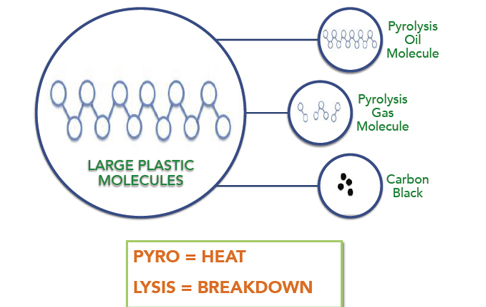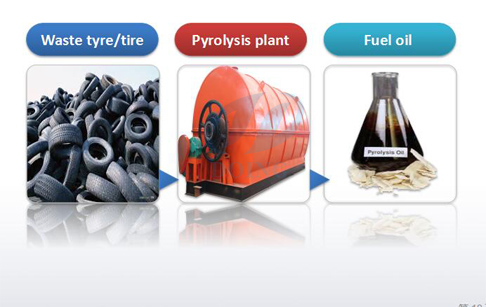What is pyrolysis of tires?
Waste Tire/Plastic Pyrolysis Plant / Date:April 27, 2017

Pyrolysis

Pyrolysis of scrap tire
Pyrolysis is the most recommended alternative for the thermochemical treatment of waste tires and extensively used for conversion of carbonaceous materials in Europe and the Asia-Pacific. Pyrolysis is a two-phase treatment which uses thermal decomposition to heat the rubber in the absence of oxygen to break it into its constituent parts, e.g., pyrolysis oil (or bio oil), synthetic gas and char. Cracking and post-cracking take place progressively as the material is heated to 450-500°C and above.
The pyrolysis method for scrap tires recycling involves heating whole or halved or shredded tires in a reactor containing an oxygen free atmosphere and a heat source. In the reactor, the rubber is softened after which the rubber polymers disintegrate into smaller molecules which eventually vaporize and exit from the reactor. These vapors can be burned directly to produce power or condensed into an oily type liquid, called pyrolysis oil or bio oil. Some molecules are too small to condense and remain as a gas which can be burned as fuel. The minerals that were part of the tire, about 40% by weight, are removed as a solid. When performed well a tire pyrolysis process is a very clean operation and has nearly no emissions or waste.
Request Information
Send your inquiry for further information





